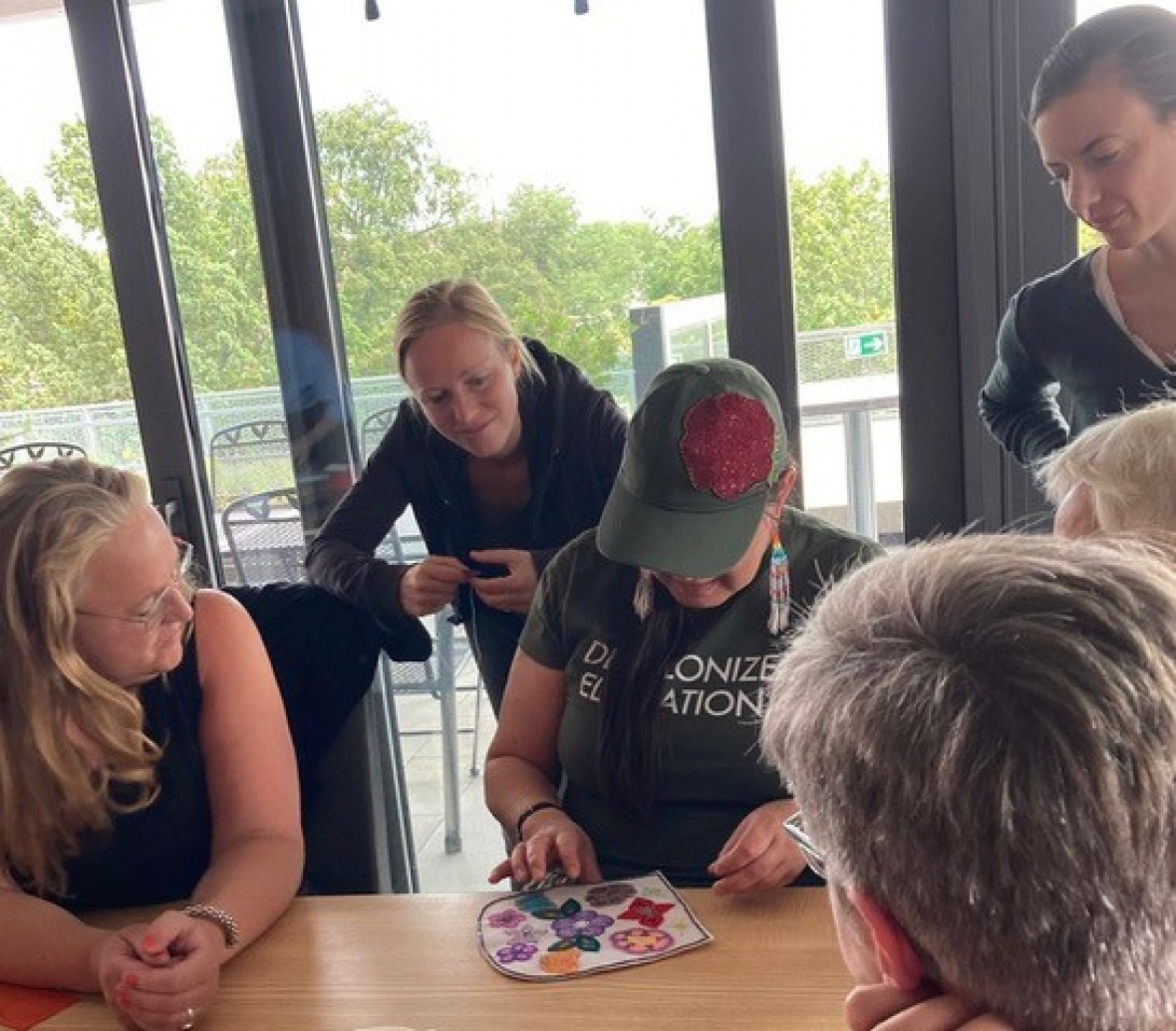Gwich’in fur mitten making and the need for collaboration in research
15.08.2022
As part of her two-week stay as visiting researcher at the IASS, Dr. Charleen Fisher (University of Alaska Fairbanks) held a workshop on traditional Gwich’in fur mitten making and bead working on Friday, July 15, 2022. Participants were provided with a thorough overview of the cultural context within which these knowledges and practices are embedded and transferred across generations: Dr. Fisher gave an introduction to the Athabaskan language family (to which the Gwich’in language belongs), different furs used for various clothing items (e.g. fox, beaver, ground squirrel), as well as styles and techniques of sewing fur and bead working characteristic of different communities. Participants then got to immerse themselves in sewing and beading by working on mittens, for which Dr. Fisher had sewn fleece inlets and cut beaver fur in the previous days, or by beginning their own little bead work projects. These hands-on activities provided a glimpse of how such crafting practices involve knowledge transfer required for living in extreme Arctic conditions as well as of how they can establish human connection and improve well-being.
Indigenous knowledge under pressure
While young Gwich’in continue to learn the art of fur mitten making and intricate bead work from their parents and grandparents, they are forced to resist colonial and commercial exploitation to keep their knowledge alive. Across the Arctic, languages, knowledges, and lives have been lost as a result of violent colonial practices, which extend into the present. State regulations threaten to close down schools if the number of students drops below a set threshold, forcing families to move and leading to decline in small communities; commercial fisheries are depleting fish stocks, upending traditional fishing practices that form the foundation of social networks within communities. Dr. Fisher shared impressive and impactful acts of activism and resistance: individuals dedicated to Gwich’in language revitalization working over decades to teach children; protests against school closures; her own work documenting crafting practices; and young women reinterpreting bead work in engagement with the dominating American culture.
Implications for research
Dr. Fisher highlighted the urgency felt by Indigenous scholars, teachers, activists and others, their limited capacity, and the need to carefully consider where to dedicate time and efforts. This has important implications for non-Indigenous researchers aiming to work as allies in collaborative and co-creative research projects. The fur mitten making and beading workshop formed part of several workshops and meetings (e.g., a workshop at the Foundation of Siberian Studies in Fürstenberg, visits and meetings with the curators of the Ethnological Museum of Berlin and the Museum of Asian Art at the Humboldt-Forum, the Berlin Phonogramm Archive, the Museum of European Cultures, as well as discussions with researchers and curators of the Grassi-Museum für Völkerkunde in Leipzig) organized in collaboration with the UFZ/iDiv (Thora Herrmann) during Dr. Fisher’s stay in Potsdam, all of which were intended to bring together colleagues and research partners to reflect upon and work towards improved ways of collaboration between Indigenous and non-Indigenous researchers and Indigenous rights holders in the Arctic.


